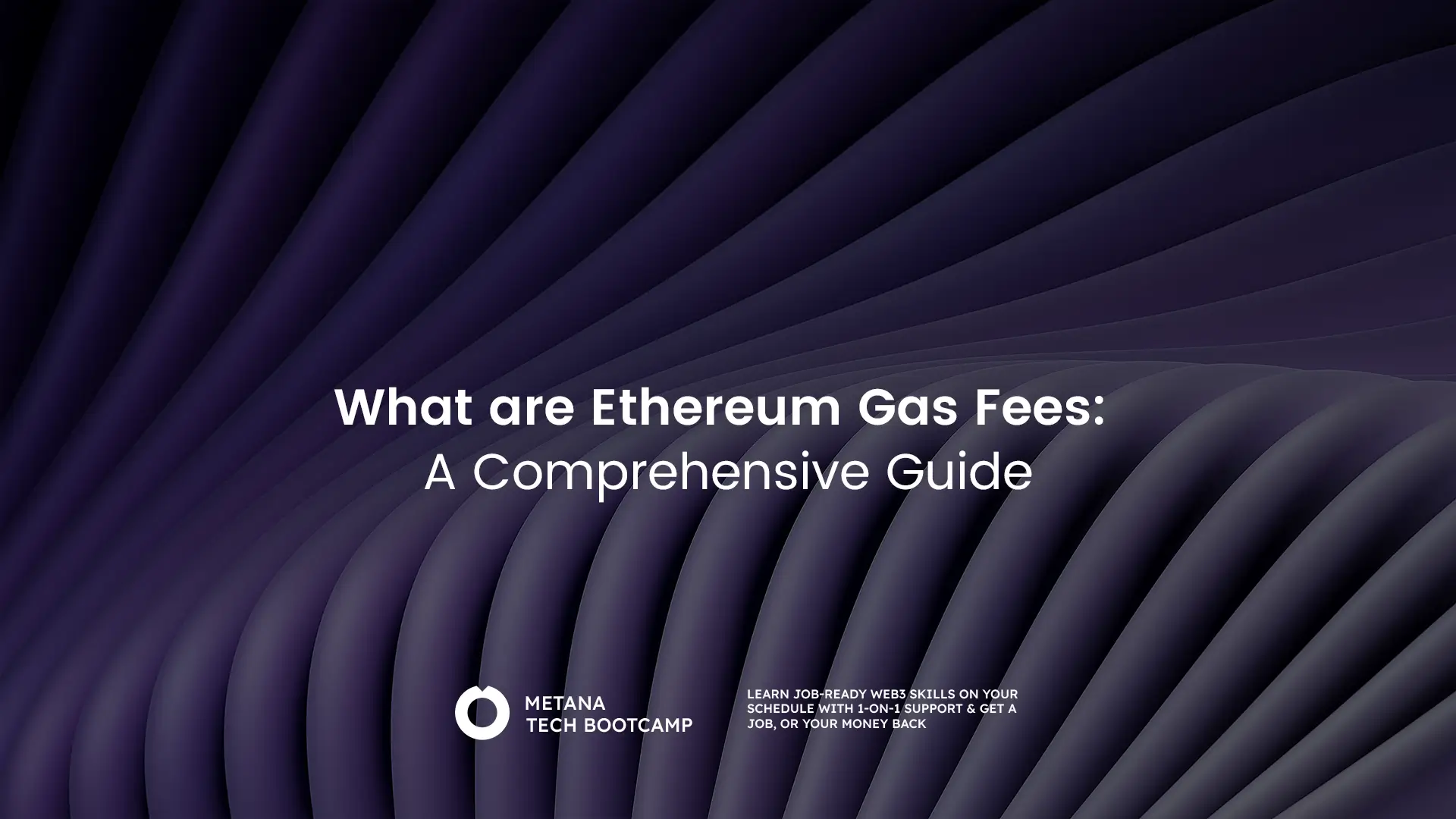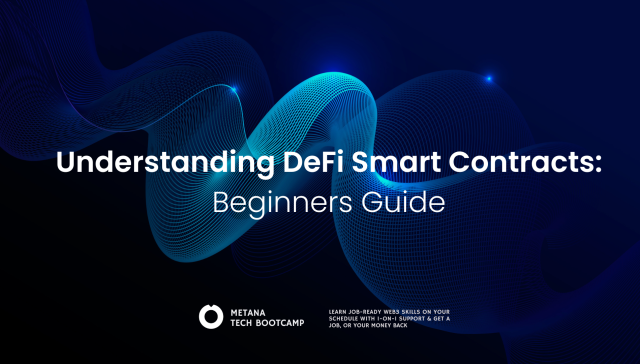Struggling to grasp why your Ethereum transactions sometimes cost more than the transaction itself? You’re not alone in this crypto puzzle. Let’s simplify it. Ethereum gas fees are the cash you pay for the computer work needed to make your Ethereum transactions happen. These fees change a lot, and sometimes, they can be really high! Ever wonder why this happens and how you can avoid paying too much?
This article is here to clear up the confusion about What are ethereum gas fees. It’ll explain them in a way that’s easy to understand. Plus, it’ll give you smart tips on how to keep your costs low. This way, you can have a smooth and wallet-friendly experience with Ethereum. This article is going to show you how to be savvy with your transactions and save money!
What is Gas?
To comprehend the essence of gas in Ethereum, let’s delve into its foundational role. Beyond being a mere unit of measure for computational work, gas acts as a fundamental economic mechanism ensuring the integrity and security of the network. It prevents spam and abuse while aligning the incentives of users and miners. An analogy often used is to envision gas as the fuel that powers the Ethereum Virtual Machine (EVM), where each operation requires a specific amount of gas.
In the intricate dance of decentralized systems, gas acts as a crucial player. It’s not merely a technical concept but a linchpin of economic incentive, shaping user behavior and maintaining the network’s equilibrium. Imagine the Ethereum network as a bustling marketplace, where each transaction and smart contract execution demands a toll – that toll is paid in gas. This section will further elaborate on the multifaceted roles of gas, from its function in preventing network abuse to its role in creating a self-sustaining ecosystem.
Gas Price vs. Gas Limit
Understanding what are Ethereum gas fees involves grasping the dynamics between gas price and gas limit. Gas price is the cost users are willing to pay for each unit of gas, typically measured in Gwei. Gas limit, on the other hand, is the maximum amount of gas allocated for a transaction. Adjusting these parameters allows users to customize their transactions, balancing cost and speed. For instance, setting a higher gas price increases the likelihood of a faster transaction confirmation.
Let’s delve deeper into the concept of gas limit. In the Ethereum network, every transaction has a gas limit, representing the maximum computational work it can perform. However, setting the gas limit too high might lead to unnecessary costs, as users pay for the computational resources allocated, whether they use them or not. Conversely, setting it too low could result in a failed transaction. This section will provide practical examples of scenarios where adjusting gas prices dynamically or optimizing the gas limit can lead to significant cost savings, offering users actionable insights for efficient transaction management.
1.3 Gas Economics
Gas economics involves the interplay of various factors influencing gas prices. Market forces, user behaviors, and external events collectively shape the economic landscape of gas fees. For example, during high-demand events like Initial Coin Offerings (ICOs) or significant protocol upgrades, gas prices tend to surge due to increased competition for network resources. Understanding these economic intricacies empowers users to anticipate and navigate fluctuations in gas fees effectively.
In the ever-fluctuating world of cryptocurrency, where markets are influenced by numerous factors, gas fees are not exempt from external pressures. Users often find themselves at the mercy of market dynamics, where gas prices can resemble the peaks and troughs of a volatile stock market. Dive into this section to explore real-world examples of how market forces, user behaviors, and external events collectively contribute to the ebb and flow of gas prices. Understanding these dynamics will enable users to make informed decisions, strategically navigating the economic landscape of Ethereum gas fees.
Factors Influencing Gas Fees
Network Congestion
Network congestion is a pervasive factor impacting Ethereum gas fees. To provide a tangible example, consider the explosive growth of decentralized finance (DeFi) applications. As users flock to participate in lending, trading, and yield farming, the demand for network resources skyrockets, leading to congestion. This surge in demand naturally results in elevated gas prices. Strategies for users to navigate and mitigate the impact of network congestion include utilizing off-peak hours for transactions or utilizing Layer 2 scaling solutions.
Let’s take a closer look at network congestion, a phenomenon analogous to rush hour traffic on a busy highway. During peak times, such as major token launches or popular DeFi protocols distributing rewards, the Ethereum network experiences congestion. In this congested state, transactions compete for limited block space, leading to higher gas prices. Understanding the systemic issues contributing to congestion, such as the burgeoning decentralized finance (DeFi) ecosystem, will empower users to adapt to and mitigate the impact of network congestion on gas fees effectively. This section will also explore emerging Layer 2 solutions that aim to alleviate network congestion, providing users with a comprehensive understanding of the evolving landscape.
Gas Price Strategies
Optimizing gas fees requires a sophisticated understanding of gas price strategies. In volatile markets, gas prices can fluctuate rapidly. A real-world example involves the use of dynamic pricing tools that analyze current market conditions and suggest optimal gas prices for timely transaction execution. Additionally, understanding the governance mechanisms of popular DeFi protocols, where users can vote on gas limits, offers insights into how decentralized decision-making affects gas fees.
Gas prices are not static; they are subject to the whims of the market. Imagine navigating a busy marketplace where prices for goods vary throughout the day. In the Ethereum ecosystem, gas prices fluctuate based on factors such as transaction demand, network congestion, and user preferences. This section will delve into advanced gas price strategies, including the role of decentralized autonomous organizations (DAOs) and governance mechanisms in influencing gas prices. Additionally, we’ll examine the broader implications of external events, such as network upgrades or protocol changes, on gas price dynamics. This nuanced exploration aims to provide users with a comprehensive toolkit for navigating the intricacies of gas prices in diverse contexts.
Priority Transactions
During network congestion, prioritizing transactions becomes crucial. For instance, decentralized exchanges often implement priority transaction mechanisms to ensure that users can swiftly execute trades even in peak periods. Users can opt for higher gas prices to incentivize miners to include their transactions in the next block. Understanding the mechanics of priority transactions empowers users to make informed decisions based on their urgency and willingness to pay a premium for faster confirmation.
Picture yourself in a crowded airport, trying to catch a flight. Those who pay for priority boarding get on the plane first, ensuring a quicker journey. Similarly, in the Ethereum network, users can prioritize their transactions by paying a higher gas price, ensuring that miners give precedence to their transactions. This section will explore the algorithmic processes determining transaction priority, the role of miners in prioritizing transactions, and how users can strategically optimize their transactions for speed and cost in a congested network. Users will gain insights into the intricacies of priority transactions, enabling them to navigate high-demand scenarios more effectively.
What are the Tools for Monitoring Gas Prices
3.1 Gas Trackers
Gas trackers play a pivotal role in providing real-time data on gas prices. A notable example is Etherscan’s Gas Tracker, which offers a user-friendly interface displaying current gas prices, historical trends, and recommended gas prices for different confirmation speeds. Users can leverage such trackers to monitor market conditions and choose optimal times for executing transactions.
In a world where information is power, gas trackers serve as the navigational tools for Ethereum users. Think of them as real-time dashboards displaying the current market conditions and price trends. This section will delve into how different gas
trackers operate, exploring their features, accuracy, and user interfaces. By understanding the nuances of gas trackers, users can stay informed about the ever-changing gas price landscape, enabling them to make strategic decisions for cost-effective transactions. Practical examples and comparisons of popular gas trackers will be provided to guide users in choosing the most suitable tools for their needs.
Gas Estimators
Gas estimation tools, such as ETH Gas Station, employ algorithms to predict suitable gas prices based on network conditions. These tools analyze recent transactions, pending transactions, and other factors to offer users an estimate of the gas price required for timely confirmation. Integrating gas estimators into transaction strategies helps users avoid overpaying for gas during periods of high demand.
Estimating gas prices is akin to predicting the weather – it requires sophisticated algorithms and real-time data analysis. In the Ethereum ecosystem, gas estimators serve as meteorologists, providing users with forecasts for optimal gas prices. This section will delve into the inner workings of gas estimation tools, exploring the algorithms they use, the data sources they rely on, and their reliability in predicting gas prices accurately. By understanding the intricacies of gas estimators, users can enhance their transaction strategies, ensuring cost-effective transactions in varying market conditions.
Gas Monitoring Apps
Dedicated gas monitoring apps, like MyEtherWallet’s Gas Tracker, cater to users seeking a mobile-centric solution. These apps provide real-time gas price data, transaction history, and personalized notifications. Exploring the features of different gas monitoring apps allows users to choose platforms that align with their preferences, whether they prefer web-based interfaces or mobile applications.
In a world where mobility is key, gas monitoring apps bring the power of real-time information to users’ fingertips. This section will explore the features and functionalities of popular gas monitoring apps, highlighting their strengths and potential limitations. Users will gain insights into how these apps enhance their ability to monitor gas prices on the go, receive timely notifications, and make informed decisions about transaction timing. Practical examples of gas monitoring apps in action will guide users in integrating these tools seamlessly into their Ethereum experience.

Tips for Optimizing Gas Usage
Gas-Efficient Smart Contract Development
Developing gas-efficient smart contracts is paramount for minimizing transaction costs. An illustrative example involves the optimization of Solidity code. By employing techniques such as storage minimization, using events efficiently, and minimizing expensive computations, developers can significantly reduce gas consumption. The ERC-1155 token standard is a notable example of gas-efficient contract design, providing a versatile and cost-effective solution for managing multiple token types within a single contract.
Embarking on a journey into the realm of gas-efficient smart contract development is akin to mastering the art of crafting lean, efficient code. In this section, we’ll delve into the intricacies of Solidity optimization techniques, exploring real-world examples of how developers can minimize gas consumption without compromising functionality. From storage optimization to event management, users will gain actionable insights into the best practices for developing gas-efficient smart contracts. Case studies of successful gas-efficient projects will showcase the tangible benefits of adopting these strategies.
Batch Transactions
Batch transactions represent a strategic approach to reduce gas costs. Suppose a user needs to perform multiple actions within a decentralized application. In that case, they can bundle these actions into a single transaction, effectively reducing the gas cost per action. This practice is widely utilized in decentralized finance (DeFi) protocols, where users often execute multiple operations in a single transaction to save on gas fees.
Imagine going grocery shopping and paying a single fee for all your items, rather than individual fees for each product. In the Ethereum network, batch transactions offer users a similar advantage – the ability to bundle multiple actions into a single transaction, optimizing gas usage. This section will explore the mechanics of batch transactions, providing step-by-step guidance on how users can implement this strategy in various scenarios. Real-world examples of successful batch transactions in DeFi and other decentralized applications will illustrate the tangible benefits of adopting this optimization strategy.
Gas Token Strategies
Gas tokens, such as CHI and GST2, introduce an innovative dimension to gas fee optimization. Users can buy and hold gas tokens during periods of lower network activity when gas prices are relatively low. Subsequently, during peak periods, users can redeem these tokens to pay for gas at a lower effective cost. This strategy allows users to capitalize on market fluctuations and strategically optimize their gas expenses.
These tokens transform the landscape of transaction optimization, introducing a dynamic element that allows users to navigate the ebb and flow of gas prices. In this section, users will gain a comprehensive understanding of how gas tokens operate, exploring the mechanisms of buying, holding, and redeeming these tokens. Case studies of successful gas token strategies will illustrate the practical benefits of incorporating these instruments into gas fee optimization plans. By mastering gas token strategies, users can enhance their ability to adapt to changing market conditions and optimize their gas expenses effectively.
Stateless Contracts
Stateless contracts represent an evolution in smart contract design, aiming to eliminate the need for persistent storage. A pertinent example involves Ethereum Improvement Proposal (EIP) 2929, which introduces gas cost adjustments and incentives for stateless contracts. By reducing reliance on storage, stateless contracts contribute to lower gas consumption. However, developers must carefully assess the trade-offs and consider the specific requirements of their decentralized applications.
The journey toward stateless contracts is akin to adopting a minimalist lifestyle, where less is more. In this section, we’ll explore the nuances of stateless contract design, dissecting the implications of Ethereum Improvement Proposal (EIP) 2929 and similar initiatives. Users will gain insights into the potential benefits of embracing stateless contracts, including lower gas costs and increased scalability. Real-world examples of successful stateless contract implementations will provide users with practical guidance on adopting this cutting-edge approach to smart contract design.
Gas Fee Optimization Case Studies
Success Stories
Examining real-world success stories provides valuable insights into effective gas fee optimization strategies. Consider the case of a decentralized exchange that successfully implemented a dynamic gas pricing model. By analyzing user behavior and market conditions, the exchange adjusted prices dynamically, ensuring optimal transaction confirmations even during peak periods. Such success stories offer tangible examples of how adaptive strategies can lead to cost-effective and efficient transactions.
Success stories are not just tales of triumph; they are blueprints for others to follow. In this section, users will delve into case studies of successful gas fee optimization strategies, exploring the thought processes, challenges, and innovative solutions implemented by industry leaders. Whether it’s a decentralized exchange optimizing gas prices dynamically or a decentralized lending platform fine-tuning its transaction strategies during peak demand, these success stories will provide users with actionable insights and inspiration for crafting their gas fee optimization narratives.
Lessons Learned
Lessons learned from various case studies distill actionable insights applicable across different scenarios. For instance, a decentralized lending platform may have learned valuable lessons about optimizing gas fees during liquidity mining programs. These lessons could include the importance of strategic timing, prioritizing critical transactions, and utilizing gas-efficient smart contract designs. Analyzing these lessons equips users with a repository of knowledge, enabling them to make informed decisions in their own gas fee optimization journey.
Every journey is marked by lessons learned along the way. In this section, users will explore the collective wisdom gained from various gas fee optimization endeavors. Lessons learned from successful and not-so-successful experiences will be dissected, providing users with a roadmap for navigating the complexities of gas fee optimization. By distilling these lessons into actionable insights, users can proactively address challenges and make informed decisions in their unique gas fee optimization journeys.
Evolving Strategies
The landscape of gas fee optimization is dynamic, requiring users to adapt and evolve their strategies continually. Consider a decentralized application that, over time, refines its gas fee optimization tactics based on user feedback and changing market conditions. Evolving strategies involve a proactive approach to staying ahead of the curve, anticipating shifts in user behavior, and leveraging emerging technologies. This section will delve into how successful projects iterate and evolve their gas fee optimization strategies, providing users with a blueprint for staying relevant and effective in the ever-changing Ethereum ecosystem.
Challenges and Solutions
No journey is without its challenges, and gas fee optimization is no exception. From unexpected spikes in network congestion to evolving user expectations, various challenges can impact the efficiency of gas fee optimization strategies. However, within these challenges lie opportunities for innovative solutions. This section will explore common challenges faced by users and developers in the realm of gas fees, presenting real-world examples of how these challenges were overcome. Understanding the potential pitfalls and their solutions equips users with the foresight needed to navigate the complex terrain of gas fee optimization.
The Future of Ethereum Gas Fees
Ethereum 2.0 and Beyond
A detailed exploration of Ethereum’s future involves examining the implications of Ethereum 2.0 on gas fees. For example, Ethereum 2.0 introduces a proof-of-stake consensus mechanism, potentially increasing network scalability and reducing transaction costs. Understanding the roadmap of Ethereum 2.0 allows users to position themselves strategically, anticipating potential changes in the fee dynamics.
Ethereum 2.0 represents a paradigm shift that could redefine the landscape of gas fees. In this section, users will embark on a journey into the future of Ethereum, exploring the features and implications of Ethereum 2.0 on gas fees. By understanding the transition from a proof-of-work to a proof-of-stake consensus mechanism, users can anticipate potential benefits, such as increased scalability and reduced transaction costs. This forward-looking perspective empowers users to align their gas fee optimization strategies with the evolving Ethereum ecosystem.
Layer 2 Solutions
Layer 2 scaling solutions, exemplified by Optimistic Rollups and zk-Rollups, offer promising avenues for addressing Ethereum’s scalability challenges. Take, for instance, a decentralized exchange implementing Optimistic Rollups to enable faster and more cost-effective transactions. Users will gain a deeper understanding of these technologies, appreciating their potential impact on reducing gas fees and enhancing overall transaction throughput.
The emergence of Layer 2 solutions represents a pivotal moment in the quest for scalable and efficient blockchain transactions. In this section, users will explore the intricacies of Layer 2 scaling solutions, such as Optimistic Rollups and zk-Rollups. These technologies aim to alleviate the scalability challenges faced by Ethereum, providing users with faster and more cost-effective alternatives for transaction execution. Real-world examples of successful implementations will showcase the transformative potential of Layer 2 solutions in shaping the future of gas fees on the Ethereum network.
Emerging Technologies
The blockchain landscape continually evolves with emerging technologies shaping the future. Consider the emergence of sharding as a potential scaling solution. Sharding aims to partition the Ethereum network into smaller, more manageable pieces, reducing the burden on individual nodes and potentially lowering gas fees. Users staying abreast of these emerging technologies gain a forward-looking perspective, allowing them to adapt their gas fee optimization strategies to the evolving Ethereum ecosystem.
As the Ethereum ecosystem evolves, so do the technologies that shape its future. In this section, users will explore emerging technologies, such as sharding, that hold the potential to revolutionize gas fee dynamics. Sharding, in particular, represents a groundbreaking approach to scaling blockchain networks, and users will gain insights into how it could impact gas fees on Ethereum. By staying informed about these emerging technologies, users can position themselves at the forefront of innovation, adapting their gas fee optimization strategies to leverage the latest advancements.
Conclusion: What are Ethereum Gas Fees?
This guide has taken you on an easy-to-understand journey through Ethereum gas fees. Now, you know more about how these fees work and how to keep them low. We talked about why gas fees change and shared tips and tools you can use to save money.
We also looked at the future of Ethereum, including exciting changes like Ethereum 2.0, which could make things better and cheaper. So, now you’re all set!
With the knowledge from this guide, you can use Ethereum more smartly and save money on fees. Whether you’re new to Ethereum or have been using it for a while, these tips will help make your experience better.

What are Ethereum gas fees?
- Ethereum gas fees are the payments made by users to compensate for the computing energy required to process and validate transactions on the Ethereum blockchain.
How are Ethereum gas fees calculated?
- Ethereum gas fees are calculated based on the amount of computational effort needed to execute a transaction, multiplied by the gas price, which is set by the user.
Why do Ethereum gas fees fluctuate so much?
- Ethereum gas fees fluctuate due to changes in network demand and congestion. More users and transactions often lead to higher fees.
Can I control how much I pay in Ethereum gas fees?
- Yes, users can set a gas limit and gas price for their transactions, which determines the maximum fee they are willing to pay.
What happens if my Ethereum gas fee is too low?
- If the gas fee is too low, your transaction may take a long time to be processed or might not get processed at all, as miners prioritize transactions with higher fees.
What is Ethereum 2.0 and how might it affect gas fees?
- Ethereum 2.0 is an upgrade to the Ethereum blockchain that aims to improve scalability, security, and sustainability. It’s expected to reduce gas fees by increasing the network’s capacity to process transactions.
How does Ethereum differ from Bitcoin in terms of transaction fees?
- Unlike Ethereum, which uses gas fees, Bitcoin transaction fees are based on the transaction size in bytes and the network demand, without the concept of gas.
Can Ethereum gas fees be paid in currencies other than Ether?
- Ethereum gas fees must be paid in Ether, the native cryptocurrency of the Ethereum network.
What are some alternatives to Ethereum that offer lower transaction fees?
- Alternatives like Binance Smart Chain, Solana, and Cardano offer lower transaction fees and faster transaction speeds compared to Ethereum.
Is it possible to get a refund on Ethereum gas fees?
- No, once paid, Ethereum gas fees are non-refundable as they compensate miners for the computational resources used to process and validate transactions.





